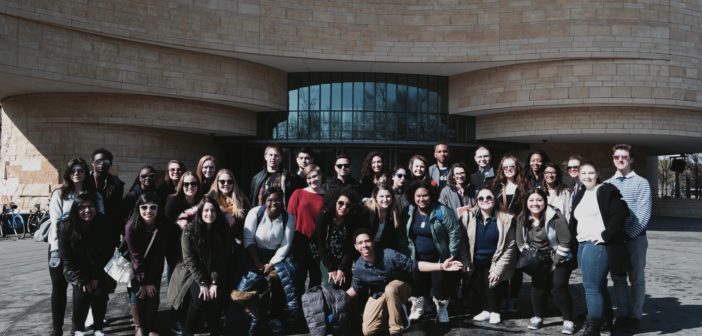It is often said that history repeats itself, and in today’s ever-intensifying political climate, being educated is more important than ever. This is one of the reasons why this year’s Sankofa trip to Washington D.C. was such a life-changing experience for many students.
In just six days, 35 NCC students were able to experience the oft-ignored history and cultures of marginalized groups. They visited the the National Museum of the American Indian, Belmont-Paul Women’s Equality National Museum, the United States Holocaust-Memorial Museum, the Mexican Cultural Institute and the National Museum of African American History and Culture.
These museums are different from most in that they do not represent the commonly-known version of U.S. history. As Dr. Shawna Rohrman, assistant professor of sociology, said:
“Museums that we typically go to, and the way that we’re educated, tend to present the dominant view on society, the dominant view on history, and those stories are socially constructed. They are from one point of view that doesn’t tell the whole narrative of America. Seeing other parts of that not only allows us to see other cultures, but really allows us to know that what we know about history has been constructed by people in power. These museums are giving power to people in under-represented groups to tell their story from their perspective, and that makes it uncomfortable sometimes for people who are in positions of privilege.”
Taking students out of their comfort zones in order to alter their perspective was something that the faculty members were able to achieve on this trip.
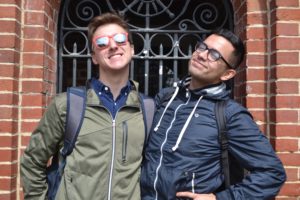
Photo by Stella Fanega
Jesus Ponce ’18 said, “[The faculty] put us in the position where they made us get out of our comfort zones, and I really appreciate it. Honestly, if it wasn’t for them, I wouldn’t have been thinking the way I am now.”
While nearly all of the students have said that this trip changed their perspective on the world, attaining this new mentality was no easy feat. The trip was based around visiting museums that would bring out a variety of emotions, and the impact of the knowledge gained is still present.
Ponce was overwhelmed by the Holocaust Memorial and the National Museum of African American History and Culture. “Those were intense, like to the point where you just have to chill out for a second and catch your breath,” Ponce said.
Dr. Rohrman was also powerfully impacted by those two museums. “I’m familiar with the story of it, but the way that they personalized the victims is really striking. It’s really sad,” she said of the Holocaust Memorial where they watched videos on Hitler’s rise to power.
“It was an interesting look at how quickly society can change if no one gets involved, if no one stands for their own values that are being negated by people in power,” Rohrman added.
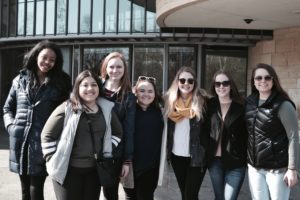
Photo by Stella Fanega
The Natural Museum of African American History and Culture seemed to be the most overwhelming to students and professors on the trip. It is a five-story building, with the first three floors focused on history and the upper two floors focused on culture.
On the lower floors, historical figures are shown, but the stories of individual people are also highlighted.
“They do such a great job of showing the key figures, but really talking about all of the people who had suffered injustice,” said Rohrman.
The upper floors are focused on African American culture, including film, television, clothing, hair and art. These elements have become integrated into American culture.
“It just shows the extent of their contribution to culture that we don’t know about because society doesn’t value it as much,” said Rohrman. “You leave that and you feel enriched, but then you feel sad that there are all these awesome things that no one gets taught.”
Cynthia Apantenco ’19 was impacted the most by an exhibit at this museum. It featured milestones from the 2000s, including former President Barrack Obama’s journey to the White House and videos of the Black Lives Matter marches across the country, all while John Legend’s “Glory” played in the background.
“In that moment, I was reminded that we are living in history,” Apantenco said.
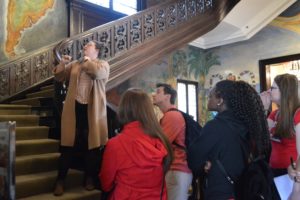
Photo by Stella Fanega
Justin Wysocke ’17 resonated with the Museum of the American Indian, though it was often difficult to hear their stories. Centuries of oppression and marginalization had resulted from ignorance and indifference by British settlers, American pioneers and the government.
“Native Americans are an underrepresented and often widely forgotten group in the United States, but their stories are crucial for understanding the process of colonization and settlement of the United States,” Wysocke said.
Wysocke, a political science major, plans to continue researching marginalized groups, particularly Native Americans and African Americans.
Many of the other students on this trip also plan to continue studying and fighting for the rights of marginalized groups, some even going as far as changing their majors. This trip had a major impact on the students, and for good reason.
“Culture can be just as powerful as education when fighting social injustices. By learning other cultures and ways of life, a natural appreciation can blossom,” Lauren Edmunds ’17 said. “It is from this appreciation that understanding, caring and humanizing happens.”
From a sociological standpoint, Rohrman says that this trip is important because it allows students to understand other cultures in a way that isn’t in comparison to their own. “Every person has their own cultural things that they do, and we tend to think that is the right way to do things. To embrace the ways that other cultures practice things, that’s really important to understand the broader fabric,” she said.
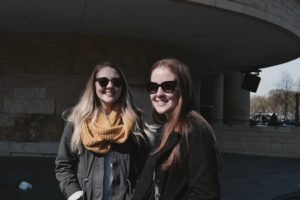
Photo by Stella Fanega
Edmunds has a strong understanding of what this broad fabric is. In a speech she had given after the trip, she compared her activism to a quilt.
“My quilt is a make-up of all the stories and histories of those that came before us. Each story patches my ignorance to blanket me in wisdom. It is from this history that we can understand the present, and use the quilt to be an activist,” she said. “My activism takes place in the courtroom, but everyone on the trip now has started their own quilt and must figure out what their activism is.”
Edmunds, a political science major with a minor in conflict resolution, intends to continue her education in social justice by moving on to law school.
“I want to be an ally for people that are going through the struggles caused by inequality and discrimination. I am privileged to have this knowledge provided to me by Sankofa, and it would be counterintuitive to not use it to fight back against social injustice,” she said.
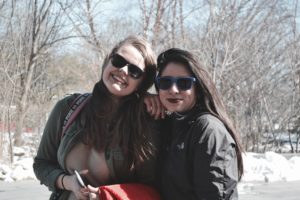
Photo by Stella Fanega
Using the knowledge they gained from this trip, other students are planning to implement changes in their day-to-day lives. Ponce came to a realization during the trip that brought up questions he strives to answer.
These questions came to him after someone had questioned the name of the National Museum of the American Indian, wondering why it isn’t called ‘First Nation’ or ‘Native American’. It was then pointed out that Congress had named the museum.
From that moment, Ponce had a realization. “I know that we say as a country we’ve come a long way from oppression and discrimination, but it just kind of threw me off.”
“After that [experience]the question popped in my head: What are you going to do for social change? What can I do, me being one person alone, with no power or no influence whatsoever, to make social change?” Ponce said. “That was my emphasis of the entire trip. Every museum made me think, what are you doing today that is going to benefit tomorrow?”
Apantenco had a similar end result. “This trip definitely helped shape how I view the world and what I can do to make change within it,” she said. “It has given me a reminder as to what I’m passionate about and what I can do to help my community.
Wysocke is reminded of the privilege that he experiences because of his race and gender. “I am also reminded of the power of history in preserving stories and culture so that others who have no attachment to the history or culture can learn,” he said.
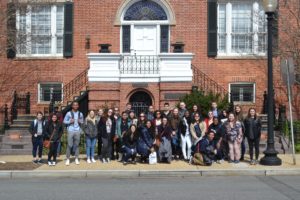
Photo by Stella Fanega
While history may be cyclical, and the idea of making a change is daunting, these students are more than capable of taking what they learned of the past and using it to create a better future.

